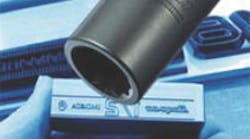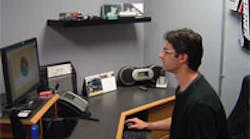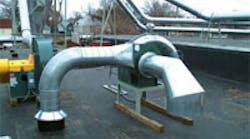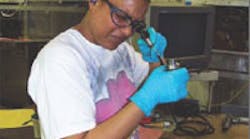Manufacturers of hand tools produce millions and millions of the same kind of components, and these companies are extremely sensitive to quality and readability when it comes to part marking. Markings are functionally important, but they must also present a look that exudes quality and precision. That is why Snap-On Tools, a developer, manufacturer and marketer of tool and equipment products, switched from steel marking stamps produced by EDM to those that are milled for its series of wrench sockets.
Snap-On’s milled marking stamps come from Columbia Marking Tools (www.columbiamt.com). Columbia double-pass mills its stamps using a proprietary ultrahigh-speed engraving and milling system at spindle speeds up to 50,000 rpm. These stamps, according to the company, can last twice as long, and in some instances up to eight times as long, as EDMed stamps.
Because steel marking stamps are considered secondary operation tools, it is not uncommon to find stamps operating for up to six months without being replaced. Combine this situation with the increased use of more environmentally friendly watersoluble lubricants and release agents, and quite often, compacted dirt will build up in character grooves, especially on EDMed stamps. Mike Francisco of Columbia Marking Tools said that EDMed surfaces work like sandpaper where build-up naturally occurs during stamping. Surface dirt collects in closed characters such as Ps, Os, and As, which ultimately causes character blowout or severe premature wear. Characters then appear missing or washed out. Columbia Marking’s stamp design engineers, using 3D SolidWorks engineering software, worked with manufacturing engineers at Snap-On and developed tooling drawings from that company’s CAD data so that the stamps came out right the first time.
Columbia Marking also incorporated Snap-On’s in-house-developed quickchange tooling for its roll marking machines into the engraved stamps so that Snap-On could easily interchange them with the EDM roll marking stamps on the existing equipment. In addition, the stamps were coated with Columbia Marking’s Auto Clean electroless nickel coating that prevents rust and rejects dirt.





